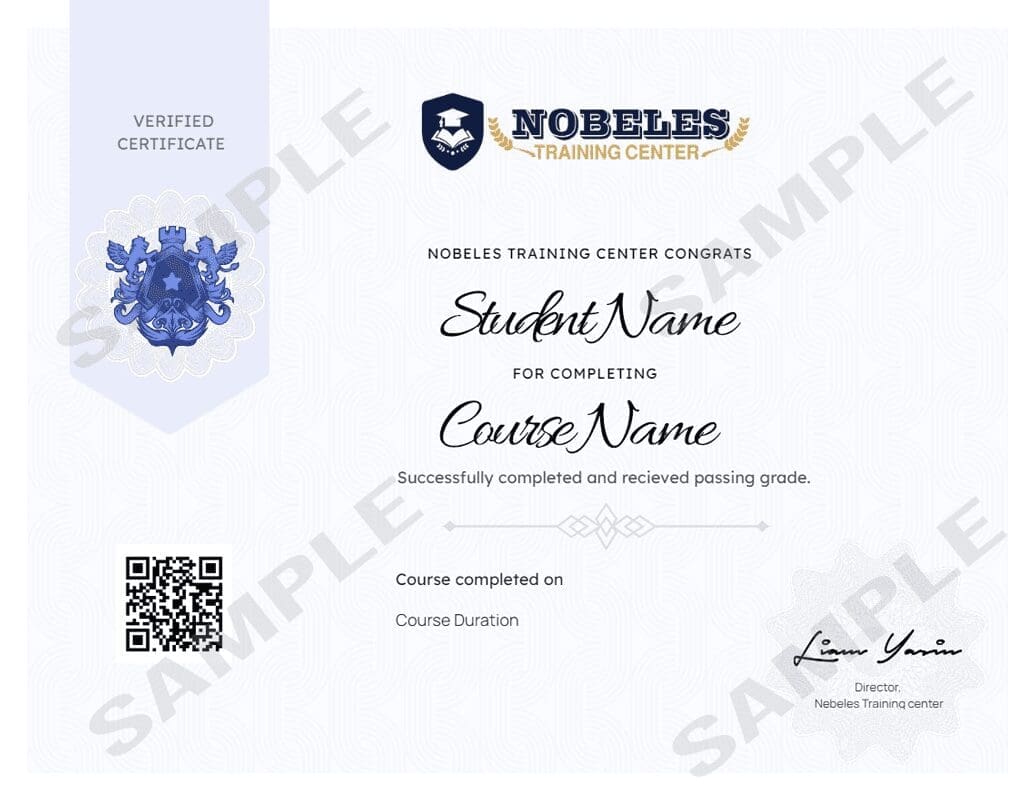Description
Curriculum
Instructor
Welcome to the Sensitivity Training in the workplace workshop. Sensitivity training is crucial in creating a workplace that is an inclusive and safe place for all to work.
This workshop will introduce you to your company’s responsibility for promoting sensitivity in the workplace, and will examine the benefits garnered company-wide from this training. You will also explore the steps that should be taken when non-compliance becomes an issue.
Please enter your name and email to view the content:
Curriculum
- 11 Sections
- 11 Lessons
- 8 Hours
Expand all sectionsCollapse all sections
- Introduction to Sensitivity TrainingIntroduction to sensitivity training focuses on raising awareness about diversity, inclusion, and interpersonal dynamics. It aims to improve communication, foster empathy, and reduce biases to create a respectful and harmonious workplace environment.1
- BenefitsThe benefits of sensitivity training include enhanced employee awareness, improved workplace relationships, reduced conflicts, increased empathy, and a more inclusive culture, ultimately leading to higher morale, productivity, and employee retention.1
- StereotypesStereotypes refer to oversimplified and generalized beliefs about groups of people, often leading to misunderstandings and biases. Sensitivity training aims to challenge and dismantle these stereotypes, promoting a more inclusive and respectful environment.1
- DiscriminationDiscrimination involves unfair treatment based on characteristics such as race, gender, age, or religion. Sensitivity training addresses discrimination by raising awareness, educating employees about biases, and promoting respectful interactions and inclusive practices.1
- Sex and Gender StereotypesSex and gender stereotypes are preconceived notions about the roles, behaviors, and attributes of individuals based on their sex or gender. Sensitivity training aims to challenge these stereotypes, fostering equality and respect in the workplace.1
- AgeAge stereotypes involve generalized beliefs about individuals based on their age, often leading to biases in hiring, promotions, and interactions. Sensitivity training addresses these stereotypes, promoting awareness and encouraging a diverse, age-inclusive workplace.1
- DisabilitiesDisabilities stereotypes refer to misconceptions about individuals with physical or mental impairments, often leading to exclusion or bias. Sensitivity training aims to educate employees, fostering understanding and inclusivity in the workplace for all abilities.1
- ReligionReligion-related stereotypes involve assumptions or biases based on an individual's religious beliefs or practices. Sensitivity training addresses these issues by promoting understanding, respect for diversity, and creating an inclusive environment that values all faiths.1
- Handling Complaints (I)Handling complaints effectively involves actively listening to the issue, empathizing with the complainant, gathering relevant information, and responding promptly. A structured approach ensures resolution and demonstrates commitment to customer satisfaction and improvement.1
- Handling Complaints (II)Handling complaints (II) includes following up with the complainant to ensure satisfaction, documenting the complaint for future reference, analyzing trends to identify underlying issues, and implementing changes to prevent recurrence and enhance service quality.1
- Post TestPost Test1
Nobles Center

5 Students146 Courses
Review
$175.00
214 students
11 lessons
Language: English
0 quiz
Assessments: Yes
Skill level All levels
Nobles Certificate
At the end of the course, you can download a copy of your certified certificate.
Nobeles Academy
Mobile Application
Download the Nobeles center mobile app from the app app store, click the button below
Courses you might be interested in
Working in a home office requires a unique set of skills. Teleworkers or virtual employees have additional challenges created by not being in a centralized office. Communication issues alone make...
-
1 Lesson
$175.00
Having the technical skills and knowledge to successfully execute your job duties is only one part of being the best you can be in the workplace. In addition to these...
-
0 Lessons
$225.00
The cloud has become a vital component for business as technology becomes embedded in modern life. Every leader needs to understand the cloud and how it operates, as well as...
-
0 Lessons
$195.00
Phone skills are a highly valuable tool to have in an employee’s skill-set, and Call Center Training will help provide those skills. This course will help = improve phone skills...
-
0 Lessons
$275.00






